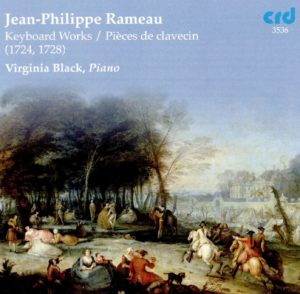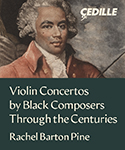Having long made her mark as a harpsichordist and Baroque interpreter, Virginia Black has been revisiting this repertoire on the modern concert grand. Her Rameau resembles her Bach in that the playing sounds less like that of a pianist than a seasoned harpsichord virtuoso at the piano. In an earlier review, I made an analogy to a person who speaks a foreign language clearly and fluently, yet not 100 percent idiomatically, and with a noticeable accent. To be specific, certain aspects of Black’s harpsichord technique get lost in translation, so to speak.
Her precise finger legato and agogic phrasings, for example, do not take advantage of the piano’s capacity for dynamic inflection and tone color, in the manner of similarly stylish yet more pianistically resourceful luminaries like Marcelle Meyer, Angela Hewitt, and Alexandre Tharaud. As a consequence, Tambourin’s rhythmic center stiffens up, with little feeling of preparation in the right-hand downbeats. Similar inflections make it difficult at times to ascertain Les Cyclopes’ basic pulse, or for the ear to differentiate what is decorative and what is melodic. This applies to slower, more introspective selections like L’Entretien Des Muses, where Black seems to pay more attention to the execution of ornaments than to shaping long lines.
Black’s approach works best with less elaborate material (La Follette, for example), while her variations of touch and emphasis in La Joyeuse’s imitative descending scales are clearly thought through and worked out. The main problem is that Black appears to play mostly on top of the keys with little arm weight, while balances generally favor the right hand. In short, Black’s interpretations abound with intelligence and good intentions, yet this seasoned harpsichordist remains a pianist in progress.
































